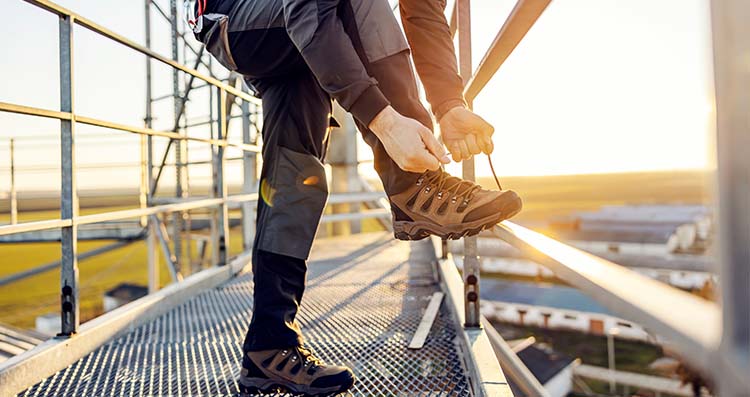Q&A – Can you use orthotics in safety shoes?
It is mandatory for employees in several sectors to wear safety shoes. They are personal protective equipment that is subject to strict rules under European legislation. Replacing the insole or adding an extra orthotic quickly leads to safety shoes no longer meeting those guidelines. What is permitted under the law and what is not?
A major portion of the population wears orthopaedic insoles to support the feet, or podiatric insoles to correct the position of the foot. Both are colloquially called “orthotics.” Employees with foot abnormalities experience greater comfort even when they wear them in safety shoes. Yet it can be dangerous to add an extra sole or to replace the sole of safety shoes.
What are the guidelines for safety shoes?
Safety shoes must comply with the European PPE Regulation 2016/425 and the Medical Devices Regulation EU 2017/745. Among other things, the aforementioned guidelines define the appropriate material composition and the correct position of the foot, for each sector and function.
A targeted risk analysis can establish the type of protection required for each function. A recommendation that employees can use when visiting an approved manufacturer can be drawn up based on the results. The manufacturer then indicates with a CE marking that the safety shoes meet all legal requirements.
The latest standards for safety shoes
With effect from 2023, the EN ISO 20345:2022 standard is the sole ISO standard applicable to new safety shoes. You can find an overview of the new markings and requirements on this poster.
A proprietary sole or insole: Where’s the rub?
Are employees replacing the sole of a safety shoe or adding an insole? If so, they are changing the composition of the material and the position of the foot. As a result, employees may no longer be optimally protected from unsafe situations. For example, an elevated foot position can lead to serious injuries if an employee drops heavy objects on the reinforced toe of the safety shoe.
It would also be impossible to rule out other occupational accidents. Consider, for example, an employee performing work in an explosive area. The law requires that he or she is obliged to wear antistatic safety shoes. But what if the sole or insole is not antistatic? If so, it will interrupt the antistatic conduction of the shoe and the employee may then cause an explosion.
Who is liable in case of an occupational accident?
Safety shoes with modified or added soles do not offer the same safety guarantees as those provided by the manufacturer. This invalidates the CE mark and therefore the shoe no longer meets the legal requirements.
Both the employer and the employee could be held liable if it transpires that an employee was not wearing certified safety shoes during an occupational accident. Moreover, the employer may have to bear high costs.

How to prevent employees from wearing unsuitable orthotics?
Safety and protection at work stands or falls with a good policy.
Therefore, establish a clear procedure with regard to the purchase, ordering and payment of orthopaedic or podiatric insoles. The prevention adviser-occupational physician and the Committee for prevention and protection at work can assist you in this regard.
Once you draw up a policy, awareness-raising is a crucial next step.
Inform employees of the risks and the dangers posed by unsuitable soles.
And make it clear that it is prohibited to arbitrarily replace orthotics.
When are employees permitted to wear orthotics?
When buying safety shoes, employees who wear orthotics must check whether they are permitted to have the pair fitted by a specialist. For some models and brands, manufacturers sell separate insoles. Employees can use these without having the safety shoes recertified.
Do workers still need custom-made or specific orthotics? In this case, they should preferably have them made by a orthopaedist or podiatrist working with the manufacturer. This will ensure that the orthotics will definitely meet the necessary conditions required to retain the safety shoe certification.
Employee or employer: who pays for the orthotics?
For an employee who needs orthotics, the law considers them to be an inherent part of the safety shoe. Since employers are obliged to provide the necessary personal protective equipment (PPE), they are responsible for the cost.
Protect your employees from head to toe
Determine which safety shoes offer the best protection with the help of a targeted risk analysis. Our experts will be happy to help you with this.
Complete the following form and we will contact you as soon as possible.